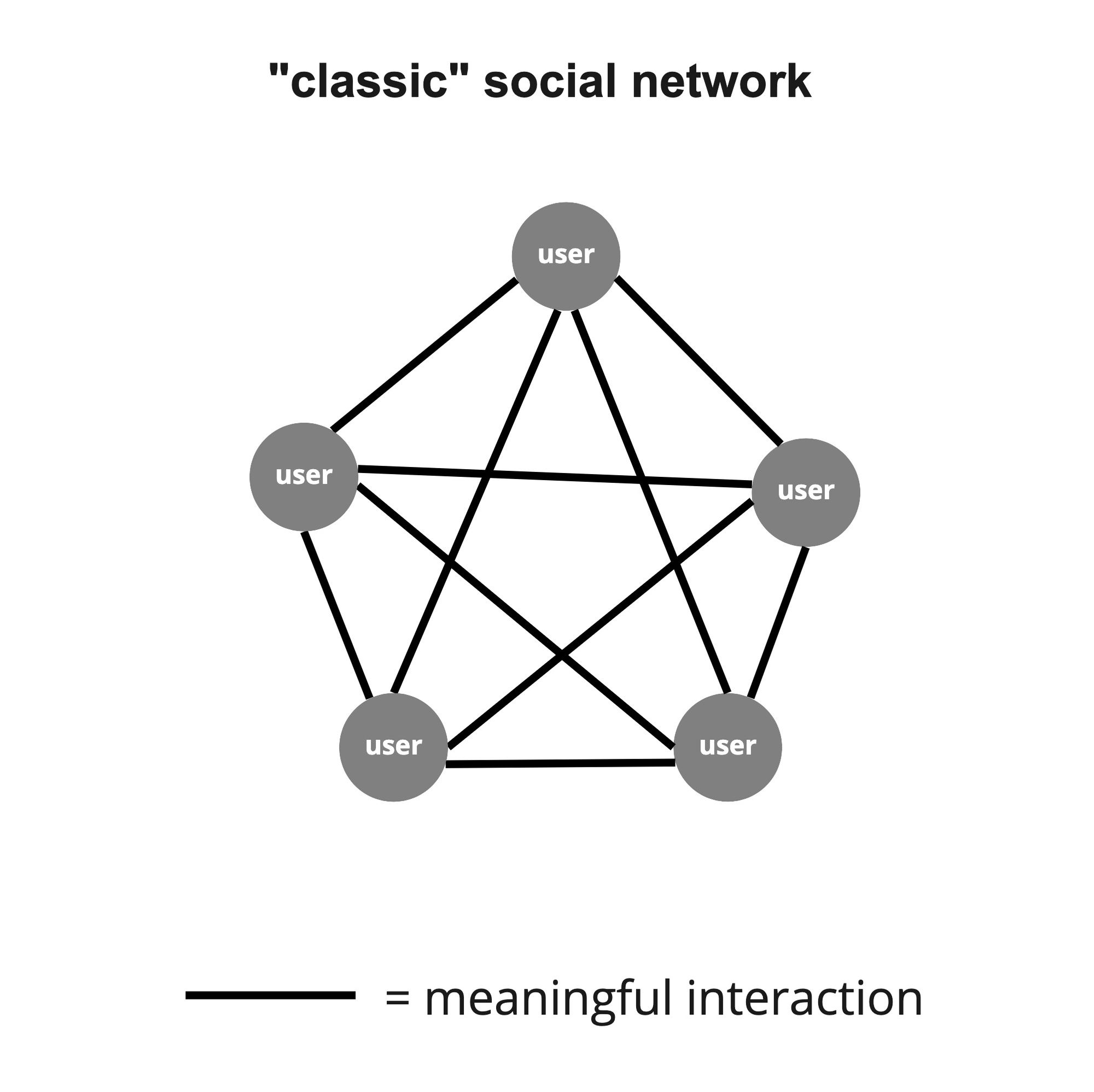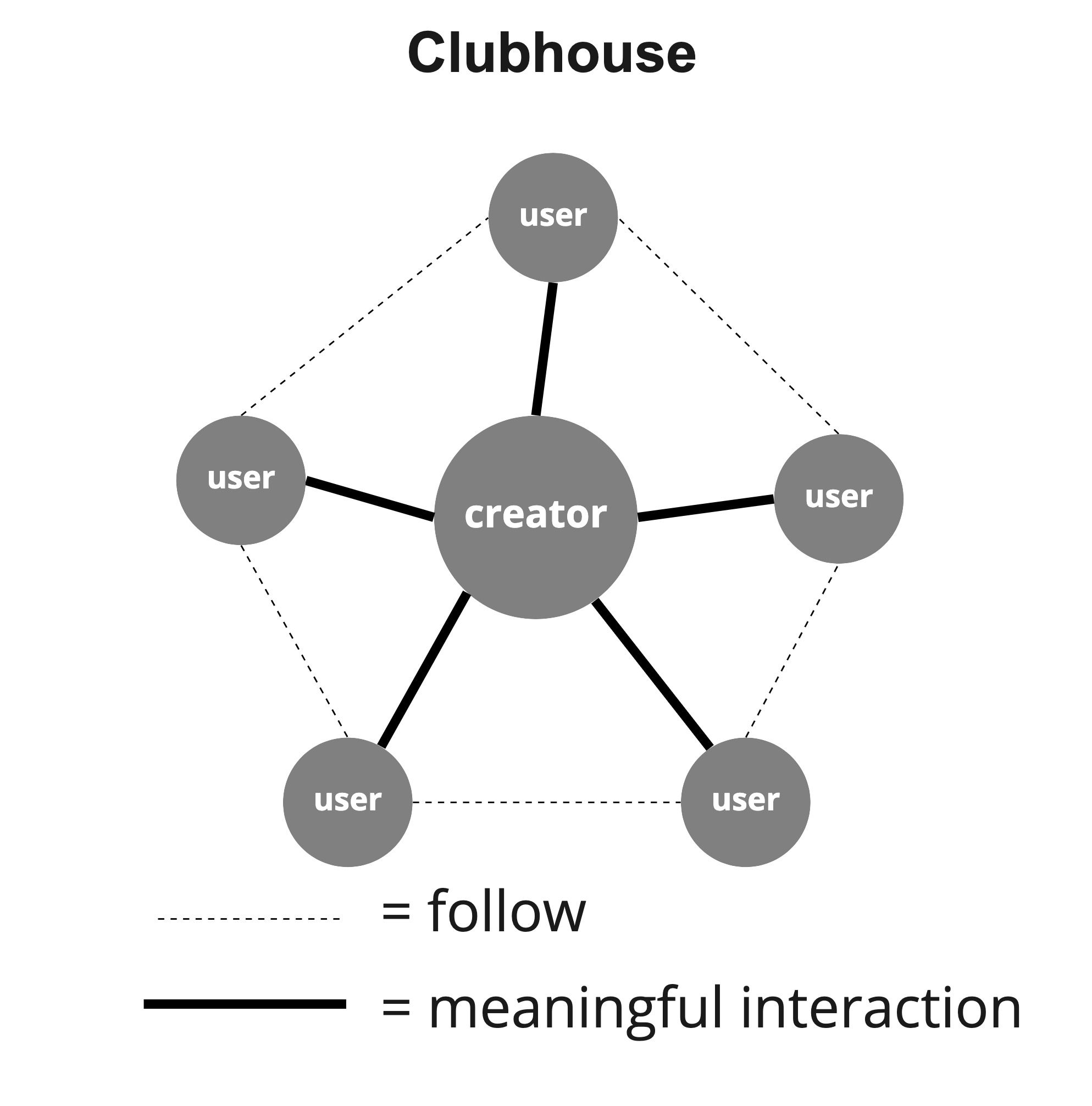Clubhouse is a content network, not a social network. And distribution will be its problem.
Clubhouse (not the project management software) has been all the rage in Silicon Valley & VC circles since last year, and in the last month or so we’re finally catching on here in Europe. If you have any connection to startups & tech, you’ll have heard about it.
Officially, it’s “a space for casual, drop-in audio conversations”. Andrew Chen, who led a16z’s $10 million investment in Clubhouse, after "spending more than a dozen hours a week on it" calls it an “audio-first social app that makes it easy to talk to other people”.
My take: it’s an app where you can listen to and sometimes join people having conversations about topics that might interest you. You do this by joining rooms, which are temporary spaces where a conversation is taking place around a certain topic. Rooms have moderators, who can invite speakers on the stage. You can raise your hand if you have something to add to the conversation and the moderator will invite you to the stage at their own discretion.
I have joined a few rooms, heard some interesting conversations, and in general, it has been fun. However, has it been $100 million valuation kind-of-fun?
I’m not sure.
My biggest problem: the current core value experience only works with real-time interaction/attention.
My hypothesis is that Clubhouse is essentially a (user-generated) content network, not a social network.
It might be a social app, where social interactions happen, but I see very little relationship building happening, which is an essential component of a social network. The nodes in a social network should have the opportunity to independently connect to each other, and have (at least the possibility for) a meaningful interaction.

In Clubhouse, meaningful interactions only occur within rooms and are routed through the people on stage. You can follow someone, also from the audience, but you can’t send them a private message or have any other meaningful interaction with them. I guess you can start a private room and only invite that person, but the bar for that seems extremely high. So in essence, the majority of the nodes in the network can’t connect directly, but are routed through main nodes who are the creators and speakers of the rooms.

Is that a problem? I’m not sure. But I would argue it disqualifies Clubhouse as a social network.
So, if we accept that Clubhouse is just a content network, then it faces a big challenge: distribution.
We have to give credit to how elegantly Clubhouse has solved the content creation problem through user generation: no shortage of people who love to hear themselves talk.
But, if you’re not the one doing the talking: what is the value interaction that you can get?
That’s right. Listening. Listening to a meaningful conversation.
And in Clubhouse, you can only listen live, in real-time, while the room is “alive”.
This is the core of the problem. Demanding real-time goes against a macro-development in our world: the move to asynchronous/on-demand delivery.
All other content networks (even TV and radio) have moved or are rapidly moving towards asynchronous and/or on-demand delivery, so that you can enjoy the content in your own time. Netflix, Hulu anyone? As consumers of content we no longer have to schedule our life around our content consumption, e.g. X-files (yeah, I’m that old) only on Tuesday at 10PM. Instead, we decide when we consume it.
And in fact, most, if not all other social networks have moved to a similar distribution model. All of the meaningful interactions on Twitter you can enjoy in your own time. A tweet from 18 hours ago, not a problem, here it is. Your experience of that tweet, in most cases, is exactly the same quality, as if you would get it in real-time. Facebook switched to showing relevancy-based content years ago, rather than keeping chronological order. On TikTok time does not even exist.
Clubhouse however demands real-time. And, unlike many other social networks, you can’t just pop-in and out, or scroll through it while paying half-attention to something else, or even while being in a conversation with someone. It demands full attention.
We can have long discussions on whether or not the move to on-demand and bite-sized content is a positive development, but it does seem to be where the world is going.
Clubhouse seems completely antithetical to those developments.
This contrarian move could be a stroke of genius: a move early into a direction that not a lot of people are seeing this going. I’m not a futurist, and healthily skeptical of some new developments, so this wouldn’t be the first, nor the last time that I am completely wrong.
But my best bet right now is that after the initial excitement wears off, and the scarcity marketing play has run its course, not many people are willing to adjust their life to listen in on the type of conversations we are seeing now. I doubt we will see the average user spending “more than a dozen hours per week”, like Andrew Chen.
Still, without monetization in place, it's difficult to say what is needed to make $100M a good bet. But to me the current model doesn't seem to be it.